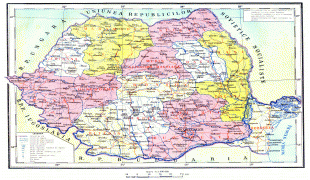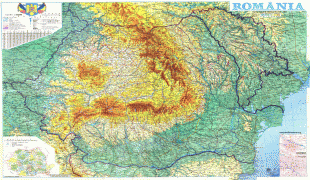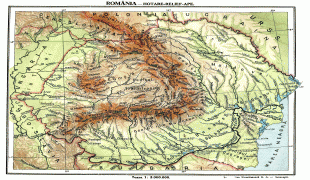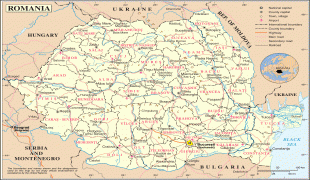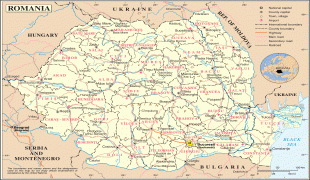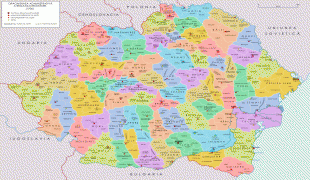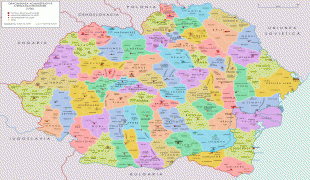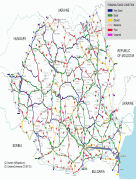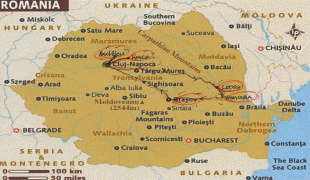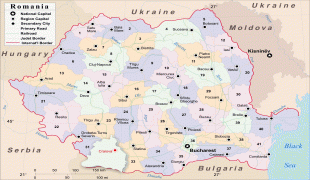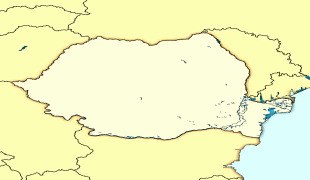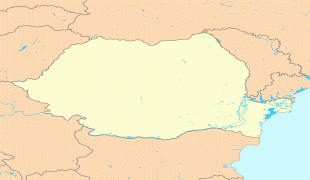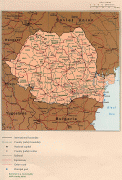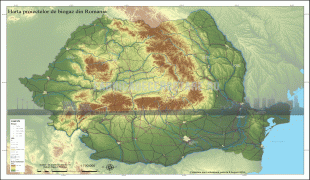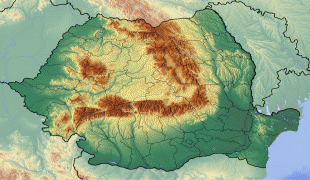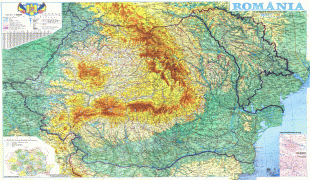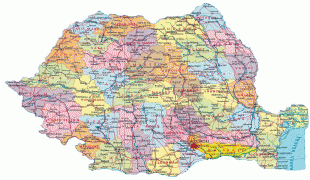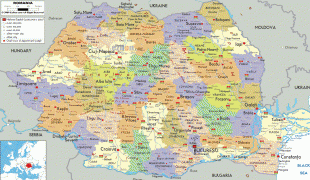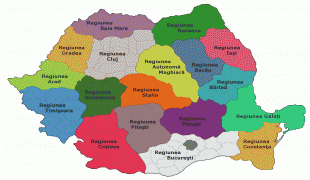Romania (România)
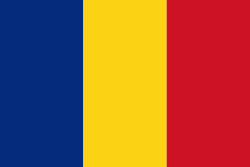 |
 |
| Flag of Romania | |
Europe's second-longest river, the Danube, rises in Germany's Black Forest and flows southeasterly for 2857 km, before emptying into Romania's Danube Delta. The Carpathian Mountains cross Romania from the north to the southwest and include Moldoveanu Peak, at an altitude of 2544 m.
Settlement in what is now Romania began in the Lower Paleolithic, with written records attesting the kingdom of Dacia, its conquest and subsequent Latinization by the Roman Empire. The modern Romanian state was formed in 1859 through a personal union of the Danubian Principalities of Moldavia and Wallachia. The new state, officially named Romania since 1866, gained independence from the Ottoman Empire in 1877. During World War I, after declaring its neutrality in 1914, Romania fought together with the Allied Powers from 1916. In the aftermath of the war, Bukovina, Bessarabia, Transylvania, and parts of Banat, Crișana, and Maramureș became part of the Kingdom of Romania. In June–August 1940, as a consequence of the Molotov–Ribbentrop Pact and Second Vienna Award, Romania was compelled to cede Bessarabia and Northern Bukovina to the Soviet Union and Northern Transylvania to Hungary. In November 1940, Romania signed the Tripartite Pact and, consequently, in June 1941 entered World War II on the Axis side, fighting against the Soviet Union until August 1944, when it joined the Allies and recovered Northern Transylvania. Following the war and occupation by the Red Army, Romania became a socialist republic and a member of the Warsaw Pact. After the 1989 Revolution, Romania began a transition towards democracy and a market economy.
Romania is a developing country with a high-income economy, ranking 53rd in the Human Development Index. It has the world's 47th largest economy by nominal GDP. Romania experienced rapid economic growth in the early 2000s; its economy is now based predominantly on services. It is a producer and net exporter of machines and electric energy through companies like Automobile Dacia and OMV Petrom. Romania has been a member of the United Nations since 1955, NATO since 2004 and the European Union (EU) since 2007. The majority of Romania's population are ethnic Romanian and religiously identify themselves as Eastern Orthodox Christians, speaking Romanian, a Romance language (more specifically Daco-Romance). The Romanian Orthodox Church is the largest religious denomination in the country.
"Romania" derives from the local name for Romanian (român), which in turn derives from Latin romanus, meaning "Roman" or "of Rome". This ethnonym for Romanians is first attested in the 16th century by Italian humanists travelling in Transylvania, Moldavia, and Wallachia. The oldest known surviving document written in Romanian, a 1521 letter known as the "Letter of Neacșu from Câmpulung", is notable for including the first documented occurrence of Romanian in a country name: Wallachia is mentioned as Țeara Rumânească.
Two spelling forms: român and rumân were used interchangeably until sociolinguistic developments in the late 17th century led to semantic differentiation of the two forms: rumân came to mean "bondsman", while român retained the original ethnolinguistic meaning. After the abolition of serfdom in 1746, the word rumân gradually fell out of use and the spelling stabilised to the form român. Tudor Vladimirescu, a revolutionary leader of the early 19th century, used the term Rumânia to refer exclusively to the principality of Wallachia.
The use of the name Romania to refer to the common homeland of all Romanians—its modern-day meaning—was first documented in the early 19th century.
In English, the name of the country was formerly spelt Rumania or Roumania. Romania became the predominant spelling around 1975. Romania is also the official English-language spelling used by the Romanian government. A handful of other languages (including Italian, Hungarian, Portuguese, and Norwegian) have also switched to "o" like English, but most languages continue to prefer forms with u, e.g. French Roumanie, German and Swedish Rumänien, Dutch Roemenië (oe pronounced as Spanish u), Spanish Rumania (the archaic form Rumanía is still in use in Spain), Polish Rumunia, Russian Румыния (Rumyniya), and Japanese ルーマニア (Rūmania).
Currency / Language
| ISO | Currency | Symbol | Significant figures |
|---|---|---|---|
| RON | Romanian leu | lei | 2 |
| ISO | Language |
|---|---|
| HU | Hungarian language |
| RO | Romanian language |






